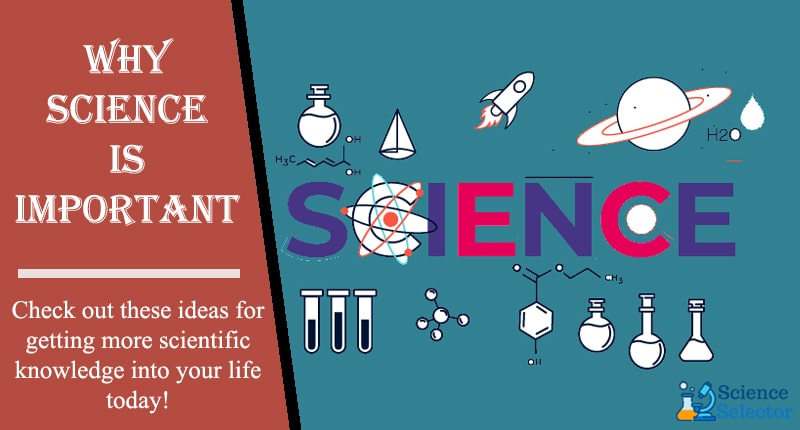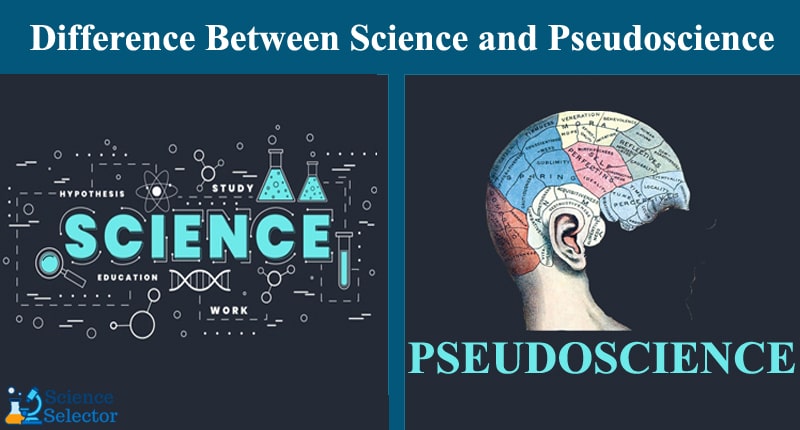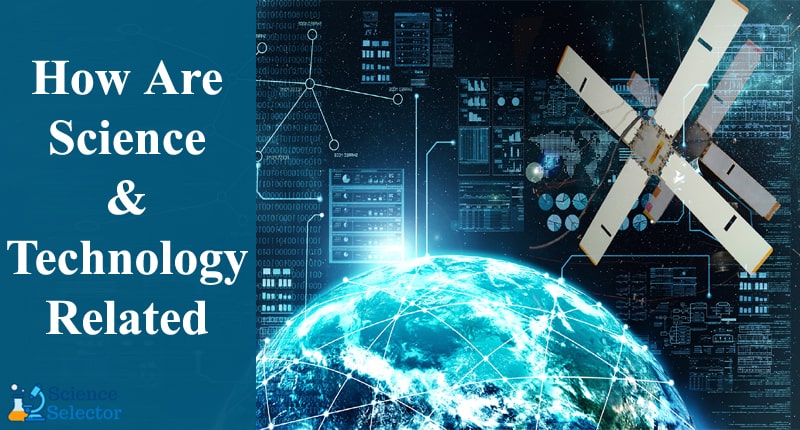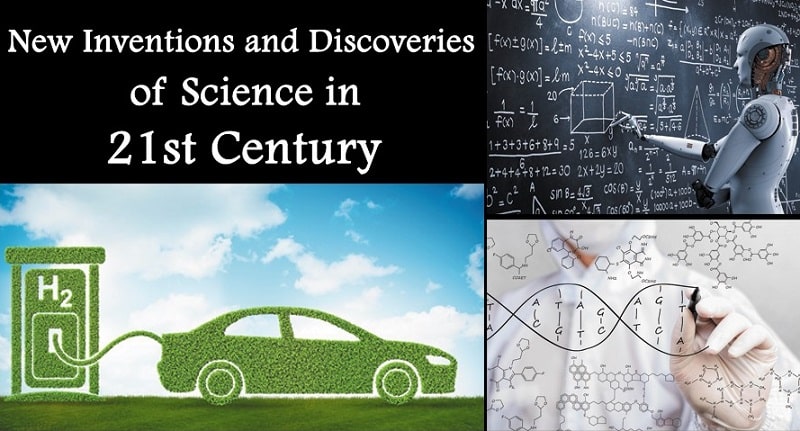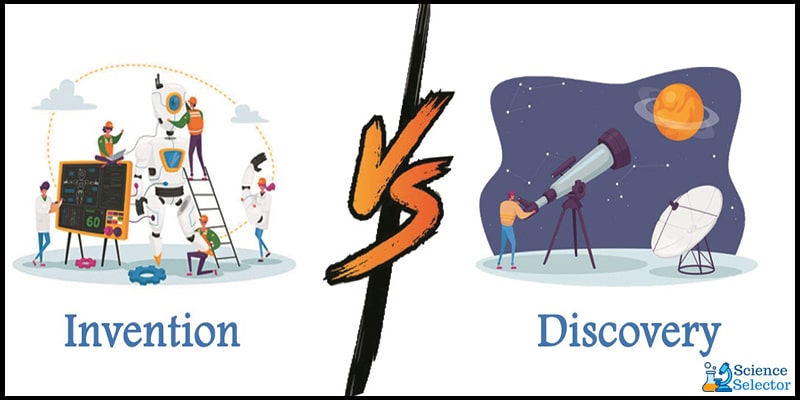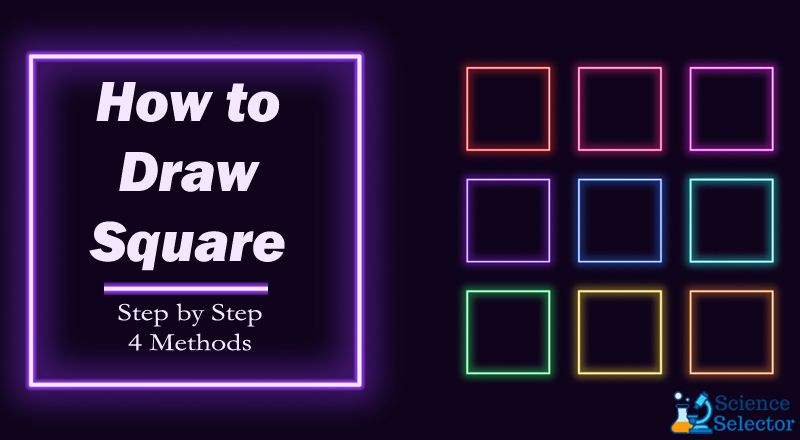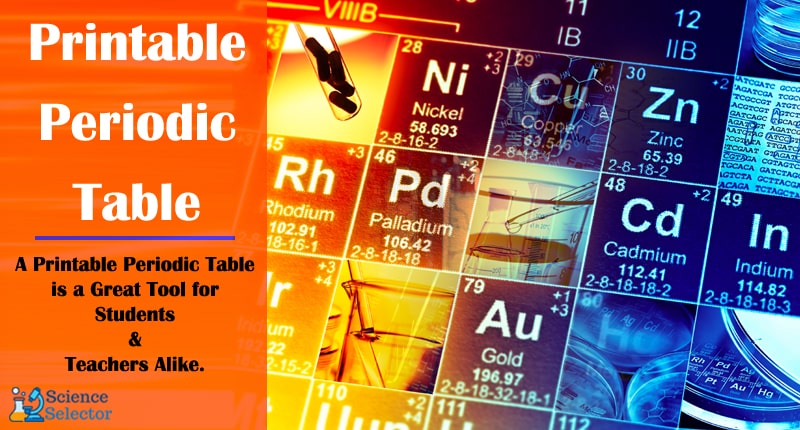Science refers to the knowledge one gains by systematically studying both the physical and natural world’s behavior and structure by observing and carrying out experiments.
Examples of natural sciences include chemistry, physics, geology, astronomy, and biology.
When carrying out their research, the knowledge scientists acquire can be theories, accurate facts, or scientific laws. Through the knowledge, we come up with various rules.
In most schools, students learn Science in general or multiple branches of Science. You may be wondering why Science is important in your life.
Science provides us with knowledge about so many things in our environment. It shows us how to carry out specific procedures to get an expected outcome.
Since it encourages innovation, it has led to the development of technology that makes life easier. Some of the inventions include robots, televisions, planes, and computers.
We use Science in almost all the activities we carry out daily. An adult’s routine may look like this: you get up, brush your teeth and take a shower, have breakfast, and go to work.
The toothpaste and soap you use is a product of Science. If you had bread, you need to mix the right amounts of different ingredients.
Varying the quantities may lead to a different outcome. The oven and electricity you use to bake is an invention of Science.
For a car to move from your house to your workplace, the wheels have to keep turning. The movement of the wheels is the work of friction which is clearly defined in physics.
There is a lot of Science around us. However, this article focuses on healthcare, agriculture, and construction.
The reason behind that is food and shelter are both basic needs. Good health, on the other hand, directly affects our productivity.
So How Is Science Used In Everyday Life With Examples?
Let’s look at some of the ways science is used in every day life including…
- Healthcare benefits
- Agriculture
- Construction
- Communications
Science makes the healthcare system stronger.
Science fuels innovation, unlocks discoveries, and informs policies. Health is a factor that affects us daily. It is also important because it influences how we run our activities.
Health scientists focus on neuroscience, microbiology, biotechnology, and immunology. The following are contributions of Science in medicine:
- Package includes 2 Compasses, 2 triangles, 1 6-inch ruler, 1 protractor, 2 pencils for compass, 2 fineliners, 1 metal mechanical pencil, 1 pencil sharpener, 1 eraser, and 2 pencil lead refills.
- With the durable plastic case, you can protect and keep the tools in one place in a backpack or desk, easy to carry and store.
- Mr. Pen geometry set is perfect for students, teachers, math experts, architects, engineers, artists, and designers at any level.
- It's also a perfect gift for your kids and friends, and it's easy to take to class and store in the classroom or at home.
Last update on 2024-04-05 / Affiliate links / Images from Amazon Product Advertising API
1. Coming up with treatments for various diseases.
Both Science and medicine make it possible to find ways to cure most diseases. Medical science researchers try to understand the molecular mechanisms of various diseases.
That eventually leads to the development of therapeutics for the diseases in question. However, in some instances, the researchers are interested in a particular subject, pursue it, and develop therapeutics.
A good example is Marie Curie, who discovered radium. Her curiosity led to the development of chemotherapy which cancer patients use on their recovery journey.
Medical scientists may directly interact with patients, work in a lab, or interpret complex raw data to make the appropriate decisions on the patients’ proper treatment.
They can come up with vaccines to prevent diseases. Some of the diseases children below the age of four get immunized against include diphtheria, chickenpox, tetanus, measles, polio, and Hepatitis B.
Antiretroviral treatments extend the lives of people infected with HIV and AIDS. Investment in research and Science leads to the development of health technologies.
Science led to machines and equipment such as the ECG machine, stretcher, and MRI machine.
2. Science enables researchers to study the users of the medical systems.
Although it is important to come up with treatments, they can only be effective if tailor-made.
The treatments have to be affordable, easy to use, and in line with the user’s culture and lifestyle. Understanding communities and users’ needs make it easier to effectively deliver and administer treatment in remote areas during an epidemic.
- Complete lab glassware set: the package includes 3 graduated cylinders (10/ 50/ 100 ml), 3 glass beakers (50/ 100/ 250 ml), 3 erlenmeyer flasks (50/ 100/ 250 ml), 5 glass droppers, 2 glass stirring rods and 2 brushes in different sizes, the all-in-one package makes it easy for lab experiment
- Quality material: the beakers and graduated cylinders set is carefully designed with quality borosilicate glass, which can ensures durability and heat resistant, so you can carry out your experiments without risk of damage
- Easy to use: each graduated cylinder and glass beaker have a wide rim and a pouring spout, making it easy to use even for children, and there are 2 sizes brushes for cleaning measuring cylinders of different sizes
- Clear scale: the beaker set and the glass dropper have scale, clear markings on the sides, which are clear and easy to read, making the measuring and storage more convenient and accurate
- Ideal for experiments: this set of glassware and labware is ideal for a wide range of occasions, including laboratories and school science experiments; The fine workmanship and safe materials will make the science experiment easy and successful
Last update on 2024-04-05 / Affiliate links / Images from Amazon Product Advertising API
3. Predicting and tracking the emerging health risks.
That makes it easier to prepare for them. Sciences such as Artificial Intelligence and data mining make it possible to forecast the health industry through the data generated. Data comes from wearable health devices, mobile devices, and digital health records.
Over a long time, the data accumulates and becomes difficult to process, retrieve, or store. That is where the mentioned sciences come in.
The medical researchers analyze the data to come up with various forecasts. The fusion node is a model that helps to construct prediction systems. The government then uses the forecasts to make informed decisions for the future.
4. Designing the appropriate health programs to ensure maximum impact.
Scientists look at what does not work and what works. That involves looking at the systems already in place. For example, they look at how often one should change their insecticide-treated nets and the number of tears it can sustain before it is no longer usable.
Another example is how they can encourage more people to wash their hands in areas prone to cholera frequently.
The answers obtained through the research make it possible for governments to refine the health programs and solutions to save more lives.
5. Science makes health information more accessible.
That makes it easier to fight health challenges and global diseases in a better way. Digital health, mobile technology, and big data contribute greatly to that.
The medical practitioners can track the medical supplies to ensure they do not have stockouts. Nowadays, tuberculosis patients can receive SMS reminders for them to take their medicine.
Science affects the agricultural sector.
Food is one of our basic needs. We feed on animal or plant products. Animal husbandry, agroforestry, and crop production make up agriculture. I
t came up during ancestral times for them to get something to eat.
Change is constant in all aspects of life. Science leads to change in terms of technology. Technological advancements give farmers new ideas and opportunities they can exploit. If the novelties work in their favor, other farmers adopt them, and that spreads.
That is how agriculture evolves. Even in the past, farmers used Science to come up with farming tools to make work easier.
A good example is selective breeding which would improve the quality of livestock. The following are contributions of Science in agriculture:
1. Using the right inputs when farming.
Inputs may include animal feeds, fertilizer, and seeds. To have the best yields, you have to use good seeds.
The researchers usually learn the genetic makeup of various plant varieties to find out ways to improve them.
When you provide animals with the right kind of food, they will have more produce. That improves the quality of food that gets to the consumers.
Fertilizers may kill plants, thus reducing the harvest when used in large amounts. Knowing the proper proportions to use is essential.
2. Growing high-yielding variety crops to improve and increase the output.
Agricultural researchers learn about various plants’ genomic makeup and carry out many experiments to develop hybrid seeds.
The yields from the resulting hybrid seeds are more resistant to pests and diseases than their predecessors.
That means that the supply of food increases.
- FITS WITH YOUR CREDIT CARDS: Sized exactly to a standard credit card or ID for stealthy every day carry in your wallet or money clip. Perfect for field work or lab work.
- PACKED WITH REFERENCE INFO: Never look up a basic engineering equation, physical constant or unit conversion again.
- EQUIPPED FOR TECHNICAL DRAWINGS: Always be ready to take a quick measurement or sketch a new design accurately with the ruler, protractor and angle drawing tools.
- NEVER OBSOLETE: Give a professional, student or budding young engineer a unique, thoughtful and practical gift that will stay with them for many years from homework to cutting-edge research.
- LASTS A LIFETIME: 0.5 mm thick laser-cut enamel-coated stainless steel built for a lifetime of use and abuse.
Last update on 2024-04-06 / Affiliate links / Images from Amazon Product Advertising API
3. The development of sustainable agricultural systems.
The role of Science in this field is to help farmers use less effort and land to produce more.
The best practices require fewer resources. Scientists look at climate change, pests and diseases, input costs, water and land quality, and biosecurity threats for sustainable agricultural systems.
Scientists use tools such as chromatographers to find out the nutritional value of our food.
That ensures that people do not consume food that will harm them. USDA and the FDA require companies to test and make reports about their products for the same reason.
Apart from testing the food, the scientists also test the soil or the environment used to grow the plants. They can do that using HPLC (high-performance liquid chromatography) or GC (gas chromatography).
Tests can show whether farms are using organic or artificial fertilizers. The tests can help farmers make good decisions to ensure the crops are safe from the nursery all the way to harvest time.
Such practices ensure that farmers use the appropriate farming practices. Excessive use of fertilizers may affect the soil composition in the long term.
Through Science, the farmers can find out which practices will ensure that they have high and constant yields both now and in the future.
4. Mechanization.
The use of machines makes work easier and more efficient. Harvesting machines help to keep the product clean.
The traditional harvesting methods, especially for legumes, add soil particles and small stones to the produce. That decreases the quality of food for the consumers.
Weeding is made easier with machines, especially if the land is vast.
Examples of mechanical systems and machines include the sprinkler irrigation system, thresher, drip irrigation system, and tractor. The manufacturing of the machines depends on Science.
The different parts of the machines are made in specific angles to ensure they work efficiently. For example, a harvester has to be a few inches off the ground not to collect soil particles.
- Durable Plastic Construction: Made from eco-friendly food-grade plastic for durability and non-toxicity.
- Multiple Sizes: Includes 4 plastic cylinder sizes (10-1000ml) and 5 plastic beaker sizes (50-1000ml) for versatile use.
- Clear Scale Lines: Standard metric scale lines on cylinders and beakers for accurate measurement.
- Flexible Pipettes: 5 included 3ml pipettes allow for precise transfer of small amounts of liquid.
- Hexagonal Base: Hexagonal base design provides stable placement and reduces measurement error.
Last update on 2024-04-06 / Affiliate links / Images from Amazon Product Advertising API
Science affects construction.
That refers to using mathematical and scientific knowledge to design different structures.
Through building Science, people can understand the components necessary for different constructions, why buildings fall or last for so long, and the appropriate designs for various establishment.
Building science stems fromchemistry, physics, architecture, life sciences, and engineering.
To develop high-performance structures, you need to think of indoor air quality, comfort, durability, and energy efficiency.
When it comes to the building’s performance, you look at the service the material or components give you compared to the expected quality. The systems approach in Science helps to ensure that the structure performs as intended.
The architect looks at the building materials’ physical properties such as thermal conductivity, density, permeability, shear strength, modulus of elasticity, and combustion temperature.
He or she considers air pressure, gravity, electromagnetic radiation, capillarity, heat transfer, combustion, corrosion, and vibration for physics’s fundamental phenomena.
The components are load-bearing capacity, fire rating, U-value, condensation potential, and airtightness.
It is vital to look at all the mentioned factors because they contribute to the building’s performance.
The system’s performance looks at aesthetics, functionality, health and safety, compatibility, and economy. Architects prefer to use system models when designing buildings instead of the trial and error method.
An architect must look at how the physical forces affect the structural integrity of the building.
That means that they would look at the air circulation, the heat and moisture flow, and solar radiation.
If the construction is happening in a desert, then there should be less insulation to prevent overheating during cold periods such as winter, warm moist air, and heat escape through leaks in the structure.
The architect should therefore design a heating system that supplies the heat being lost. You can humidify the air to replace the lost warm moisture.
Science also promotes communication.
Some inventions in the communication sector include the Internet, which makes the world a global village, the radio, printing technologies, mobile phones, computers, smart televisions, and wireless communications.
There are so many avenues to use to communicate precise information to a group of people. They are efficient, fast, and relatively cheap.
That means that people in different continents can conduct business or share ideas quickly. Most of the devices listed require electricity.
Today there is electricity in almost every household. Electricity means that people can be productive even during the night.
That increases flexibility in people’s lives because they can choose to work during the day or night. It increases productivity.
For example, if you consider desktops, heating, and air conditioning systems, they require electricity.
That means that you can still comfortably work during summer or winter. Wireless communications need electricity. That makes it one of the greatest scientific inventions.
- Package includes: you will receive 22 pieces of micro spoons and spatulas in different specifications, different sizes and shapes make it easy to work in the most situations
- Double-sides design: these square head spatula with a flat or spoon end are mainly for transferring or handling materials, while the pointed head spoon with a scoop or spoon end are convenient to mix ingredients together in deep container
- Versatile and practical: lab spatula micro scoop set features long handle for taking materials out of deep bottles and cans, suitable for laboratory and hobby use
- Quality material: all spoons and spatulas are made of stainless steel, sturdy, durable and anti-corrosion, ideal for different usage of materials
- Easy to clean: this stainless steel set are mainly applied for scooping up gel cap filler and others, which will be helpful for other professional tasks in kitchen and home
Last update on 2024-04-05 / Affiliate links / Images from Amazon Product Advertising API
Conclusion
In a nutshell, Science helps to improve our lives. It gives us a better understanding of what is happening around us. It is through Science that we have so much technology.
- Science makes the healthcare system stronger.
- Science affects the agricultural sector.
- Science affects construction.
- Science also promotes communication.
The fact that a lot of research takes place before making conclusions shows that Science is reliable.
The basics do not change, so the knowledge, in most cases, does not change over time. Science should help us make informed decisions.
We should embrace it because it is part of our daily activities. Funding the research and innovation sector in a country is indeed an investment.






